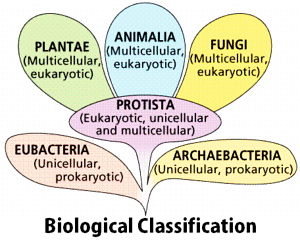Archaebacteria differ from eubacteria in
Show Hint
Archaebacteria have different cell membrane structures than other bacteria. The lipids in archaebacteria cell membranes are ether-linked compared to ester-linked in other bacteria. Archaebacteria are similar to bacteria in morphology, structure, shape, mode of reproduction, and nutrition.
- cell membrane structure
- mode of nutrition
- cell shape
- mode of reproduction.
The Correct Option is A
Solution and Explanation
Archaebacteria differ from eubacteria in cell membrane structure.
The archaebacteria are considered to be the 'ancient' bacteria that comprise extremophiles like methanogens, halophiles, and thermophiles. They represent some of the most ancient life forms that continue to exist today. Generally, archaebacteria have the same shape, size, nutrition, and appearance as bacteria. They multiply by the means of binary fission.
However, archaebacteria cell walls lack peptidoglycan. They also have different membrane lipid bonds in comparison to bacteria and eukarya. Archea membrane lipids have ether bonds whereas bacteria have ester-linked lipids.
Therefore, the correct answer is option A.
Top Questions on biological classification
- Study the following and choose the incorrect combinations:
I. Phylum: Porifera, Special cells: Lasso cells, Example: Spongilla
II. Phylum: Cnidaria, Special cells: Stinging cells, Example: Hydra
III. Phylum: Ctenophora, Special cells: Choanocytes, Example: Pleurobrachia
IV. Phylum: Platyhelminthes, Special cells: Flame cells, Example: Fasciola- TS EAMCET - 2025
- Zoology
- biological classification
- Study the following and choose the correct combinations:

- TS EAMCET - 2025
- Zoology
- biological classification
- ICBN refers to?
- TS EAMCET - 2025
- Biology
- biological classification
- Which of the following microorganisms is used in the production of curd from milk?
- MHT CET - 2025
- Biology
- biological classification
- In a DNA molecule, which of the following base-pairings is correct?
- MHT CET - 2025
- Biology
- biological classification
Questions Asked in NEET exam
A sphere of radius R is cut from a larger solid sphere of radius 2R as shown in the figure. The ratio of the moment of inertia of the smaller sphere to that of the rest part of the sphere about the Y-axis is :

- NEET (UG) - 2025
- Moment Of Inertia
- Two identical point masses P and Q, suspended from two separate massless springs of spring constants \(k_1\) and \(k_2\), respectively, oscillate vertically. If their maximum velocities are the same, the ratio of the amplitude of P to the amplitude of Q is :
- NEET (UG) - 2025
- Waves and Oscillations
- A microscope has an objective of focal length \(f_o = 2\) cm and an eyepiece of focal length \(f_e = 4\) cm. The tube length of the microscope is \(L = 40\) cm. If the distance of distinct vision of eye is \(D = 25\) cm, the magnification in the microscope is:
- NEET (UG) - 2025
- Optical Instruments
AB is a part of an electrical circuit (see figure). The potential difference \(V_A - V_B\), at the instant when current \(i = 2\) A and is increasing at a rate of 1 amp/second is:

- NEET (UG) - 2025
- Electromagnetic Induction and Inductance
- Twins are born to a family that lives next door to you. The twins are a boy and a girl. Which of the following must be true?
- NEET (UG) - 2025
- Genetics
Concepts Used:
Biological Classification
The process of grouping living organisms into categories is called biological classification. The most modern 5-kingdom classification was put ahead by an eminent scientist R.H.Whittaker. The five-kingdom classification is based on the criteria like cell structure, mode of nutrition, body form, and reproduction. One of the most important characteristics of this system is that it follows the evolutionary sequence of living organisms. The organisms are classified into distinct taxa or levels like Kingdom, Phylum, Division, Class, Order, Family, Genus, and Species. The 5 kingdoms are as follows:
